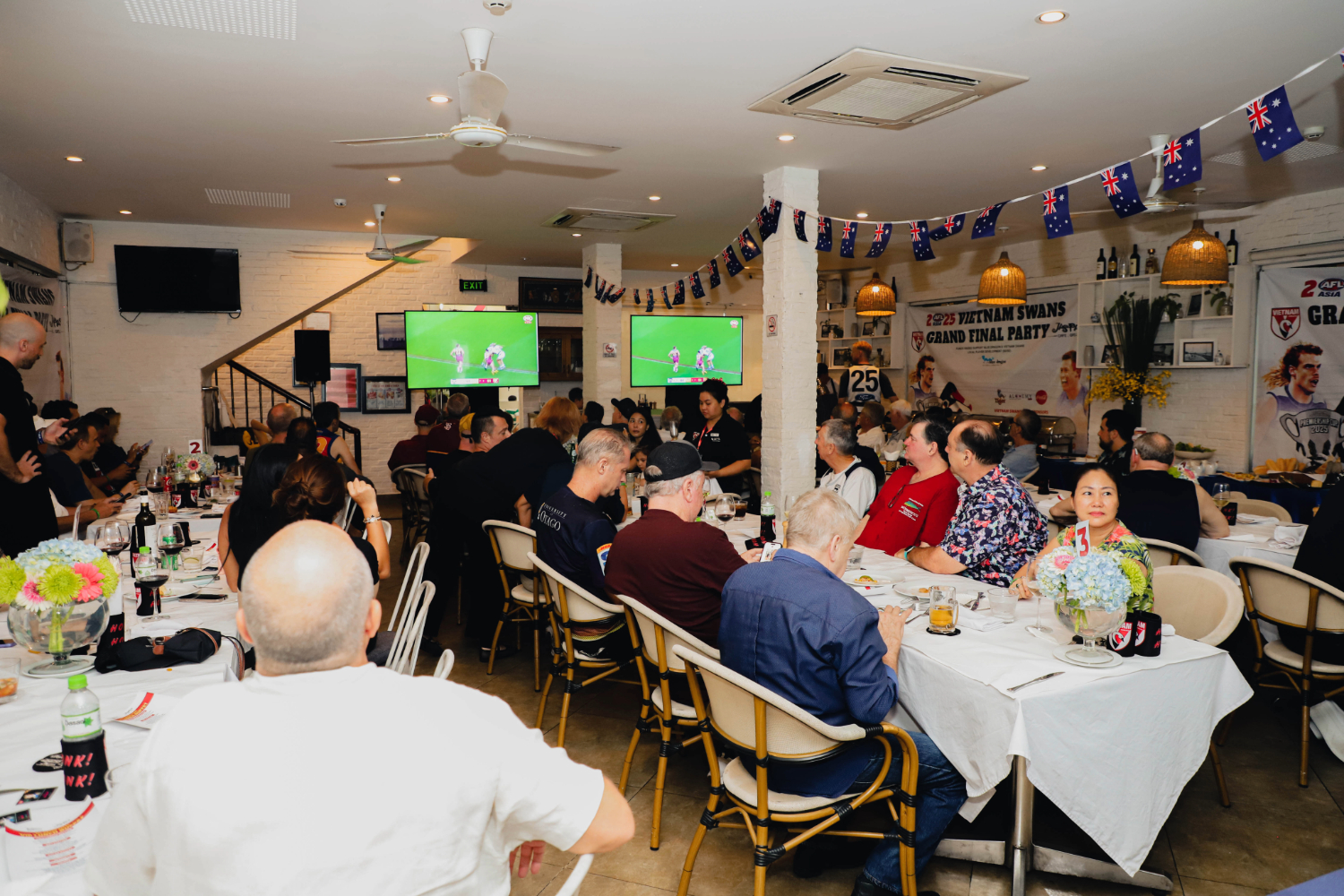
Rod Hill yesterday beneath an image of himself from the television documentary, "Vietnam Minefield", as he searches a cave in the Long Hai Hills back in 1968. Photo taken at Tommy's Bar, Vung Tau.
Yesterday Swans National Committee Member, Glenn Nolan, took a tour to the Long Hai (Minh Dam) Hills and the Long Tan Cross. In the tour party was a Vietnam Veteran named Rod Hill.
Rod is pictured to the side standing under the television screen at Tommy’s Bar yesterday. Rod is also the soldier seen in the documentary, Vietnam Minefield, jumping into the cave in the Long Hai Hills back in 1968 (for a review of the documentary by The Age, click here).
In 1967, Brigadier Stuart Graham had ordered that the Australians plant 21,000 “Jumping Jack” M16 land mines (the US made “Jumping Jacks” were so named because they would “launch 4 feet into the air and detonate, spraying high-velocity iron fragments in all directions”; source, Wikipedia). The mines were supposed to form a barrier designed to prevent the Viet Cong from infiltrating villages in Phuoc Thuy province that were near the Australian army base at Nui Dat.
Unfortunately, from the Australian perspective, the land mines were not properly defended. The Viet Cong, relatively quickly, learned how to lift the mines and then use them against the Australians with deadly effect. Diggers began to refer to the M16s as Charley’s ordinance depot.
In early 1968, Graham’s successor, Brigadier Hughes launched Operation Pinnaroo which was “to be a ‘reconnaissance-in-force’ mission to destroy the Viet Cong (VC) base installations in the Long Hai mountains. The area had long been a centre of Vietnamese resistance and was ‘riddled’ with mines” (see Australian War Memorial website).
The Vietnamese had anticipated an Australian attack and had therefore defended the Long Hai mountains – with the M16 land mines.
Rod Hill was on Operation Pinnaroo. His responsibilities included administering first aid to someone who had stood on a Jumping Jack mine and lost both legs and an arm subsequently.
When asked about living with the stress of his 12 month deployment, Rod replied, “We counted absolutely every single day that we were here.”
Without a shot being fired during Operation Pinnaroo, 15 Australians were killed and 33 wounded by the land mines. By the time the Australians withdrew from Vietnam, that number had risen to 60 killed and 250 injured. The mines also killed 42 allied soldiers and wounded 175 more. It is not known how many Vietnamese lives were lost or injured as a result of the mines.
In 1997, the Australian Government signed the Convention on the Prohibition of the Use, Stockpiling, Production and Transfer of Anti Personnel Mines and on Their Destruction which is also known as the Ottawa Agreement.
On 23 April, 2011, the Vietnam Swans will host an ANZAC Friendship Match in Vung Tau against the Hong Kong Dragons. The following day, there will be tours of the battle sites. The ANZAC Dawn Service shall be held on Monday 25 April.
- For more details of the ANZAC Friendship Weekend, click here or email the Vietnam Swans.
- For more photos of yesterday’s tour to Long Hai and Long Tan, visit the Vietnam Swans’ Web Album.
- For tours to the Long Tan Cross and Long Hai Hills, email Glenn Nolan.





















